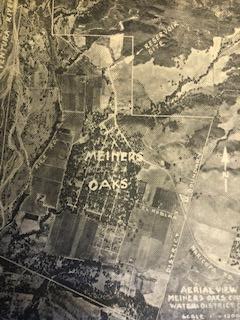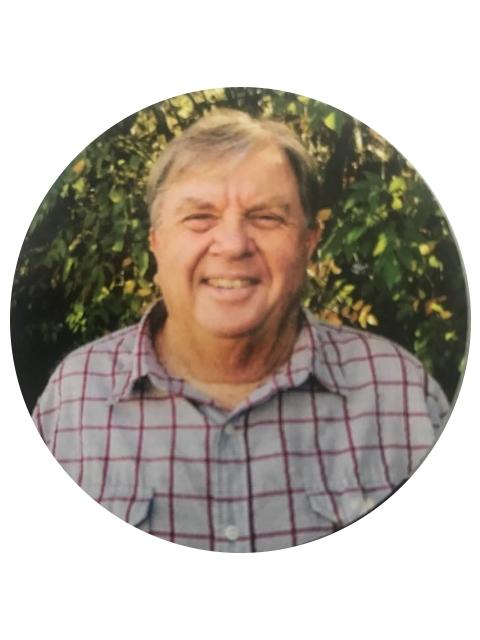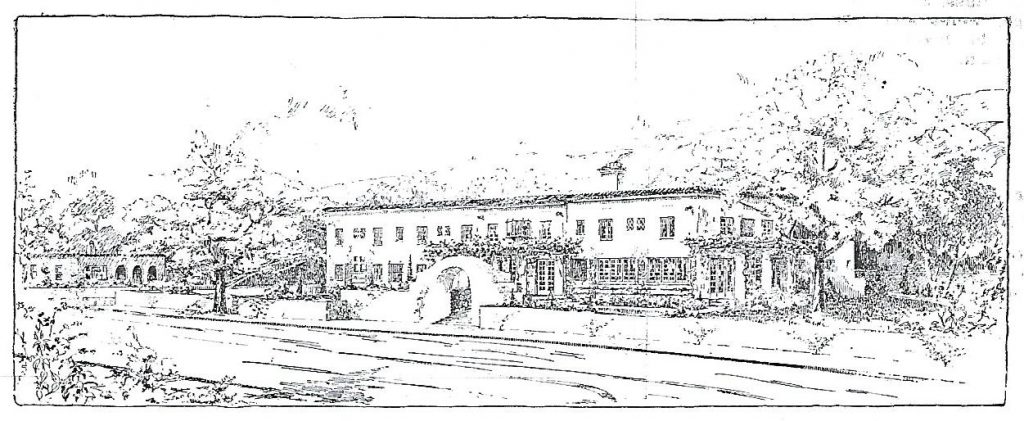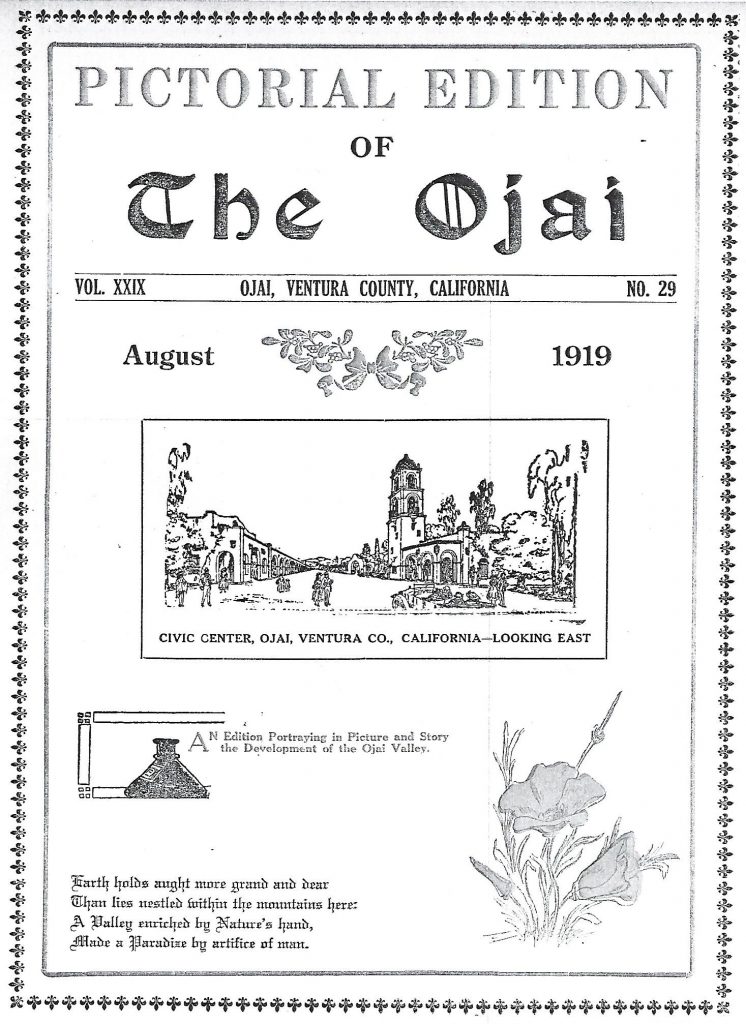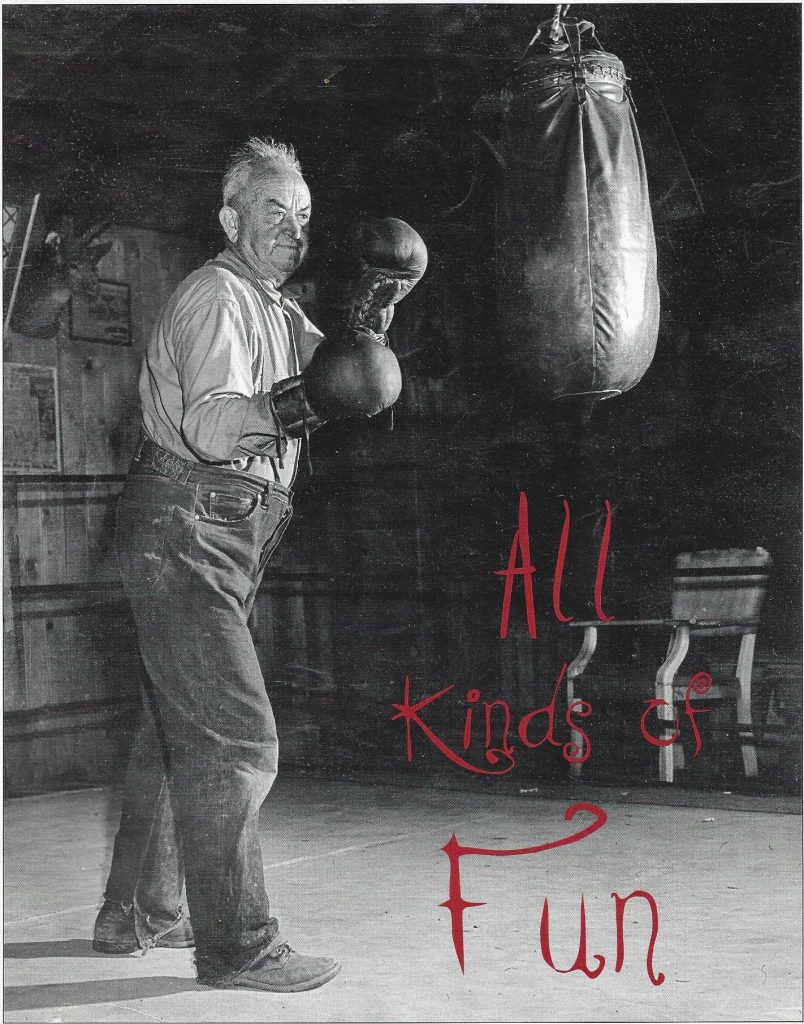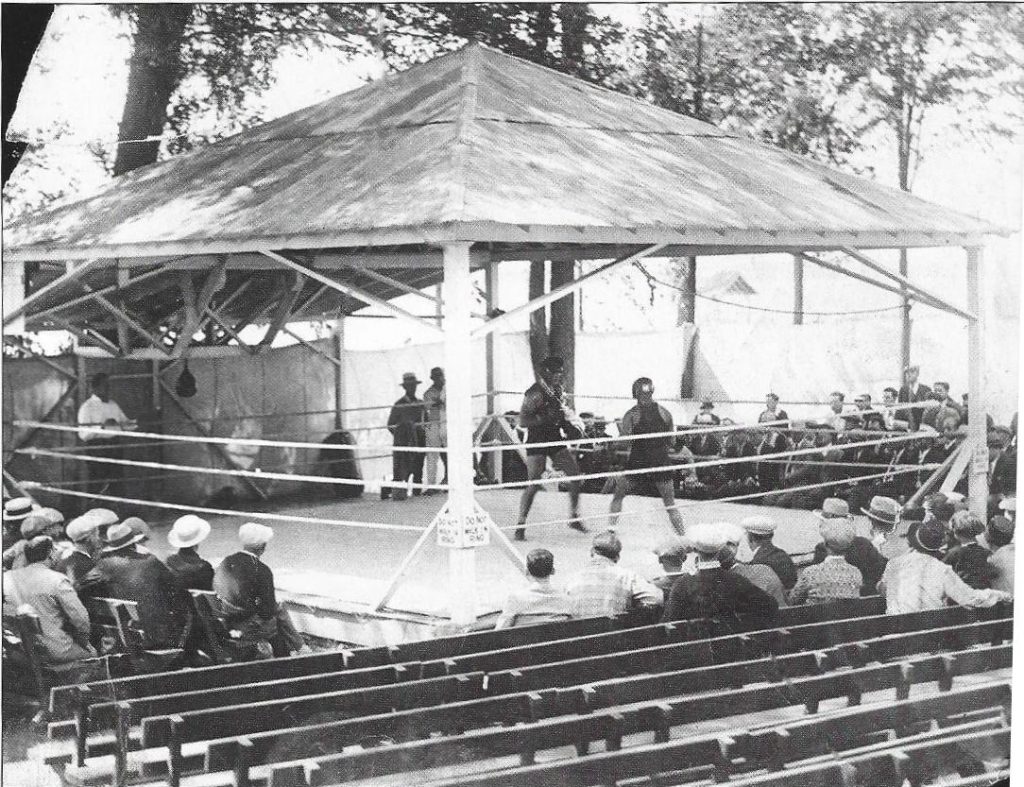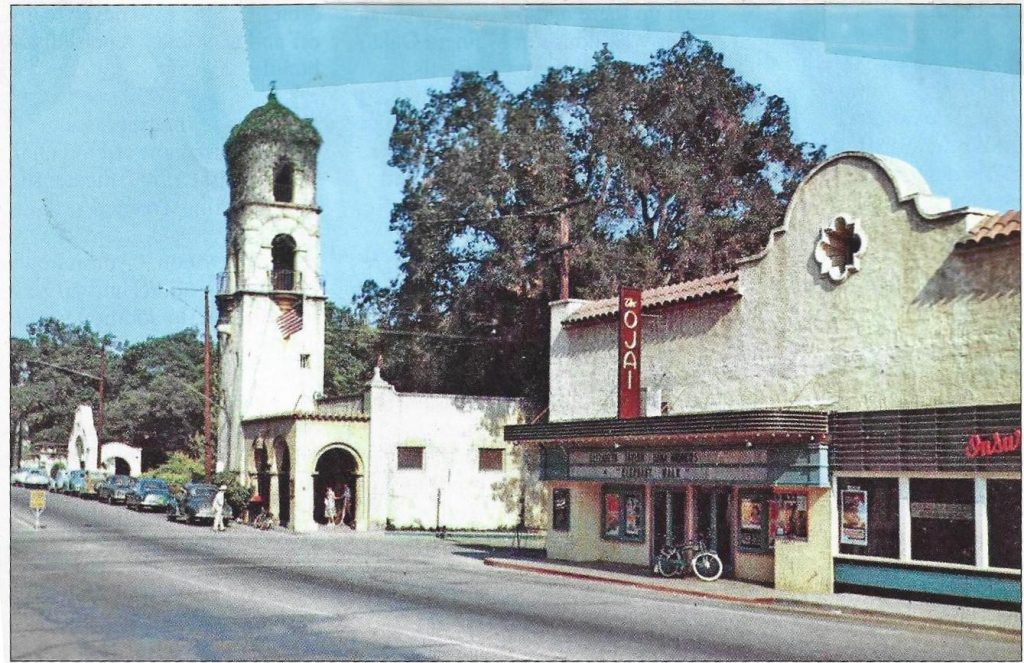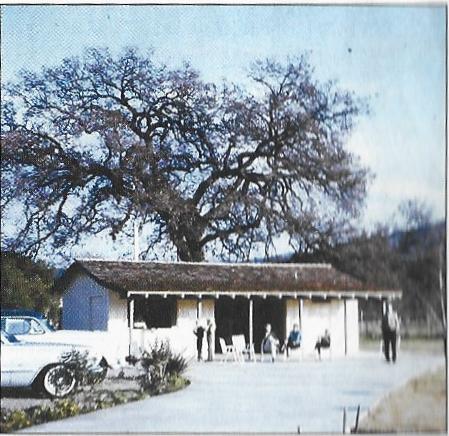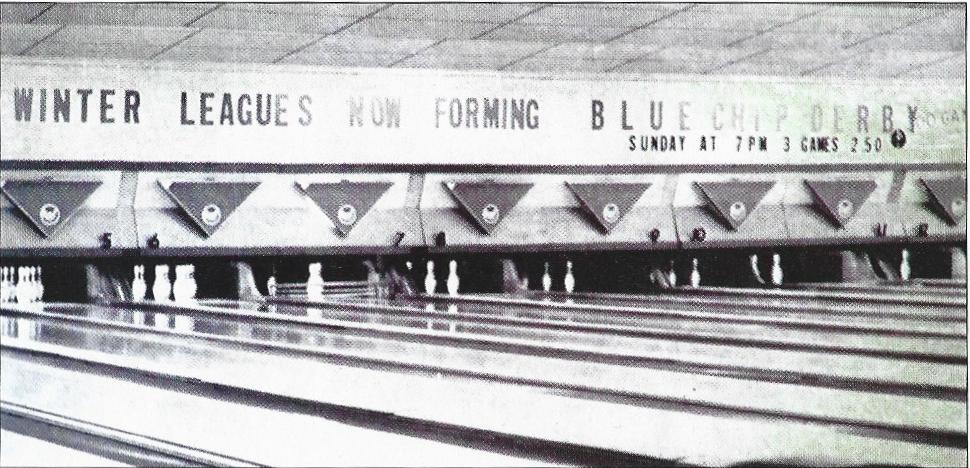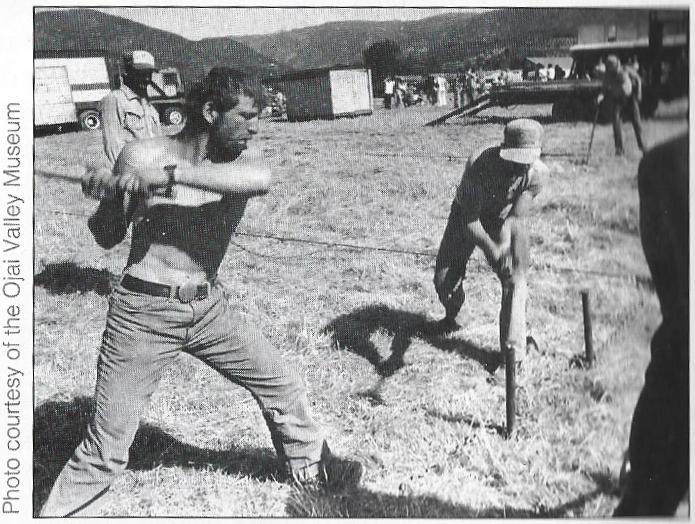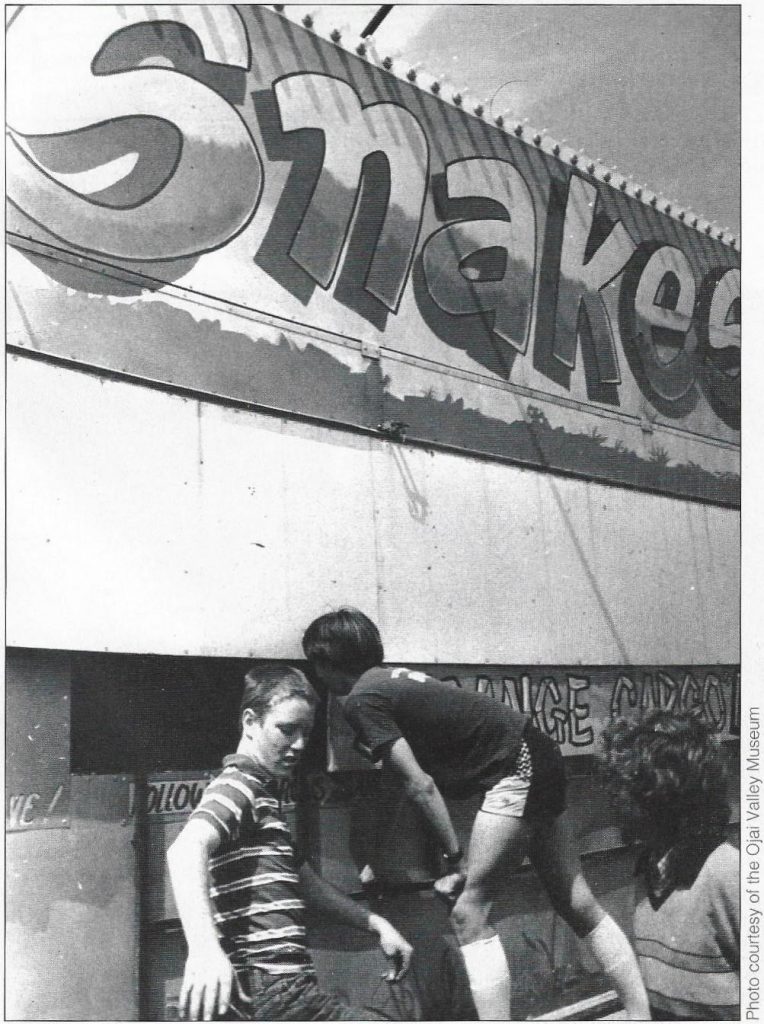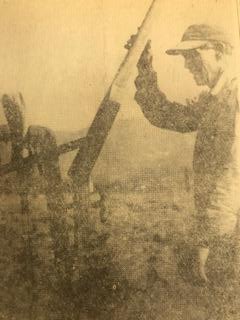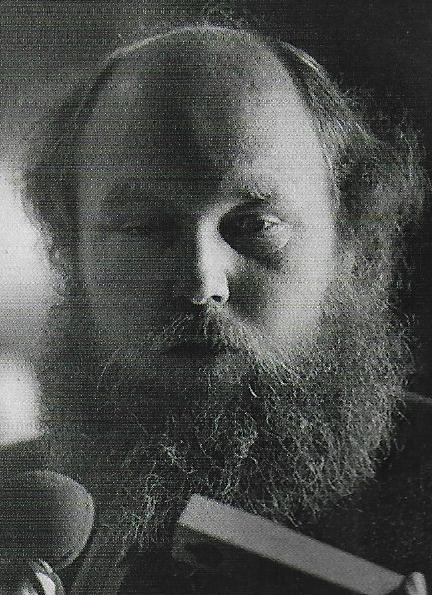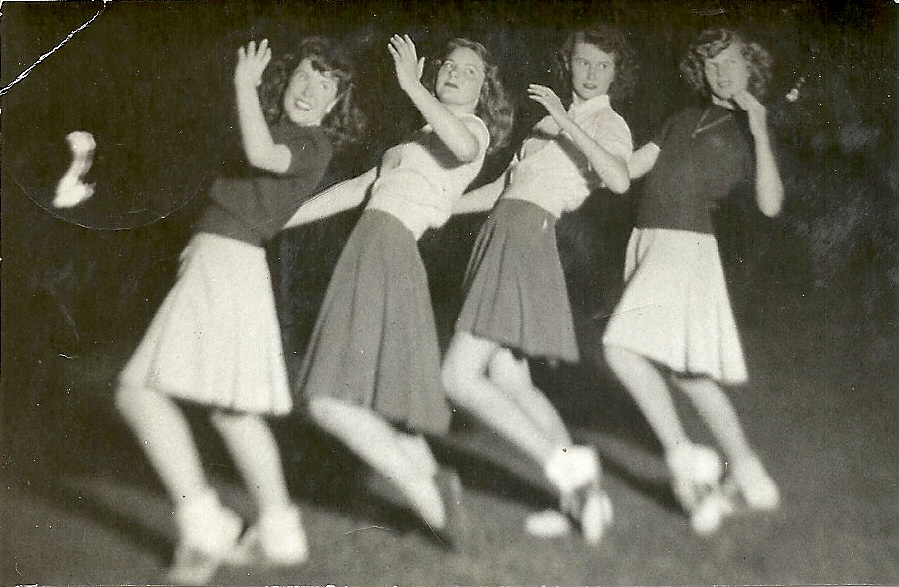The following article first appeared on the front page of the Friday, July 9, 1949 edition of “THE OJAI”. That newspaper is now called the “OJAI VALLEY NEWS”. The article is reprinted here with their permission, The author is unknown. The front-page headline was “OAKS PLANS NEW WATER SYSTEM“.
ENGINEERS’ REPORT IS EXPECTED TO BE FOLLOWED BY CALL FOR BOND ISSUE
A definite and important step in securing a new water system for Meiners Oaks was taken Tuesday night when the Board of Directors of the Meiners Oaks Water District formally adopted the preliminary engineering report of John A. Dron, Ojai civil engineer. The report as presented by Mr. Dron recommended:
(1) The construction of a storage reservoir with a capacity of 870,000 cubic feet or over 6,000,000 gallons of water;
(2) The separation of the domestic or household supply from the irrigation use;
(3) The installation of a complete new piping system, ranging from 16-inches down to a minimum of 4 inches, with 52 6-inch hydrants and 39 four-inch hydrants for fire protection, and
(4) The establishment of a complete metering system.
Meeting July 26
Upon the adoption of Mr. Dron’s report, the Board discussed the proceedings that were necessary to call for a bond issue, and decided to hold a public meeting on the evening of July 26 at the Church of Christ building in Meiners Oaks when the engineering plan and the methods of financing it would be outlined, and further proceedings be determined. After considerable discussion the Board resolved to go into the matter of a bond issue to cover the cost of the new system and to purchase the assets of the present Company, the Rancho Ojai Mutual Water Co., which would then go out of existence.
Bond Election
After the general meeting as scheduled, the Board proposes to call an election for the bond issue, as soon as the necessary legal steps have been taken. William Selby, attorney for the District stated that he believed that the issue contemplated was reasonably within the bonding capacity of the District, and that there should be no difficulty in selling the bonds, which the Board tentatively decided would run for 25 years.
Irrigation vs. Domestic Use
In presenting his report, Mr. Dron emphasized that the difficulty the community has experienced in their water system has arisen largely from the fact that there is no present storage, and the dual use between domestic and irrigation demand has been in conflict. He therefore had designed the new system to completely divorce the irrigation use from the domestic use.
The water stored in the reservoir would be sufficient, under normal circumstances, to supply all householders for nearly a month, and would reach them under a gravity head with enough pressure to give ample volume at all times and for all purposes. The irrigation use would continue to be supplied through existing lines under low pressure and all together independent of the reservoir.
Metering System
He also pointed out that the sole revenue of the district for operating expenses and for retiring the cost of a new system, was the sale of water, and that therefore meterage to all consumers was imperative. His plan provided accordingly, and a complete metering system was included in the new project.
As soon as the matter has been publicly considered at the general meeting on July 26, the Board proposes to proceed with the necessary legal steps calling for an election on the bonds. If this is carried, then funds should be available about the first of the year for construction contracts.
The Board also directed William Selby to represent the District at an announced meeting of riparian owners of the Ventura river and representatives of the Zone One Water District, when the matter of releasing sufficient water from the Matilija Dam to maintain a constant flow in the river will be taken up.
That was the end of the front page article, but another article concerning the matter was on PAGE THIRTEEN:
HERE ARE PERTINENT PARAGRAPHS FROM THE DRON MEINERS OAKS WATER REPORT
GENERAL.
1. Acreage: The area considered in the report, which has been incorporated as the Meiners Oaks County Water District under the County Water District Act of 1913, as amended, comprises about 960 acres of residential and agricultural land, a part of the Rancho Ojai, lying in and along the east bank of the Ventura river as it debauches from the Santa Ynez range into the westerly extension of the Ojai Valley.
The approximate acreages in each classification are as follows: Residential, 210 acres with about 509 dwellings; Agricultural, 245 acres in citrus and other crops; River bottom, 180 acres of poor land, non-arable, with some housing; Upland or hilly, 325 acres of pasture or brush.
2. Population: Accurate population figures are not available, but estimates based upon the number of water consumers and upon a school census indicate a present population of 2,500. Recently the population, as in general throughout adjoining areas, has rapidly increased, and there is every indication that the increase will continue so long as land and water is available for further development. It must be emphasized that the future growth is dependent upon an adequate water supply, which even now is wholly insufficient during the summer months.
3. Water Sources: The present water supply is derived from a primarily riparian water right to the natural flow of the Ventura river amounting to 231 miners inches (one miners inch equals nine gallons per minute) plus water derived from three wells in the river bottom, two of which were drilled in 1948. The supply from these wells is insufficient to augment the natural flow, which during the present dry cycle of rainfall is greatly below normal
In the future, water may become available from the recently completed Matilija dam on the west fork of the Ventura river, and it may be necessary for the District to contract for a stipulated amount of unappropriated surplus water from the Zone One Water District.
4. History of Water System: In 1928 the Rancho Ojai Mutual Water Company was incorporated and took over the elements of a water supply, as it then existed, from the Ojai Ranch and Development Company, the active subdividers of Meiners Oaks. From about 1931 the system has been operated and gradually extended and improved by the Mutual Company.
Conditions of supply became so serious in the summer of 1948 that improvement became imperative. There being no storage except the water in the intake lines, the dual demand from domestic and irrigation users came into conflict, and it was necessary to schedule the latter use to certain days of the week.
Frequently householders were able to draw water for the most essential domestic use. This condition was aggravated by the impaired condition of the domestic distribution lines which, not alone being undersized to begin with, had become so corroded that their capacity was decreased by 30 per cent. Furthermore, these lines had been placed down alleyways between blocks, which had been abandoned for public entrys and inevitably became so obstructed by fences and outbuildings that the pipelines were inaccessible.
THE ENGINEERING PLAN
1. Water Supply: For the time being nothing can be done about this beyond drilling additional wells . . . but it is suggested that an effort be made to contract with Zone One for additional water from Matilija Dam storage, to supplement the riparian diversion from the river. The District would then be in an advantageously prior position in getting water when necessary, and undoubtedly if the water was not required could sell it to other users until such time as it was needed.
2. Storage: Perhaps the most glaring deficiency in the present system is the lack of any storage capacity. As matters stand the sole water available for emergency or peak demand is that backed-up in the intake line, and when the intake of water is low the pipe had no more water in it than the amount flowing under gravity. There are times when, if a fire should occur there would not be enough water available to supply a hydrant. Once a fire gained headway in the Oaks, under hazardous weather conditions nothing could stop it and the whole community could be wiped out.
From this consideration alone, if no other, the location of a suitable storage site became of prime importance.
A primary survey of the ground discovered a prospective site that upon detailed investigation seemed to fulfill the need admirably. This is located on the NE corner of Lot 3, Section T-4-N, R-23″ S. B. B&M. Water from the intake line could be delivered to the dam at a surface level of Elev. 910 feet above sea level, with a 100-foot lift. A storage capacity of approximately 20 acre feet (871,000 cu. ft. or over 6 million gallons) can readily be obtained at an elevation which will give a house delivery from 50 to 60 lbs. per sq. in. pressure.
3. Distribution System: The present domestic distribution system is so rusted and so small in size that it cannot serve users properly. Furthermore, it is located in the inaccessible center of the occupied blocks. From these considerations it was decided that the whole system might well be abandoned and a completely new distribution system constructed.
The new distribution system would run from the reservoir down the Maricopa road to the intersection of Meiners, Tico and Fairview roads. It would bifurcate at this point, a 12″ main running down the east side of the populated district generally along Lomita Avenue, and an 8″ main running down the west side of the area along Tico Road, with an intermediate grid system on the main streets of 6″ and 4″ across-connected lines.
The size of the outside mains have been determined on the basis of full development of housing in the potential subdivision areas lying east of Lomita avenue and west of Tico Road. The interior system is predicated upon a doubled occupation as there are many vacant lots yet remaining within the community area itself and also to provide adequate fire flow.
4. Conflicting Demands: As has here been stated, a considerable trouble has arised under the present system because of the dual demand for water. The plan advanced here is to divorce the irrigation water supply from the domestic; the irrigation demand to be supplied by the present lines under gravity head.
A great economy can be affected by this, as the irrigation requirements can be met from the free flow in the intake line, independently of the domestic supply, and only the domestic supply need be pumped to the reservoir and stored. It is true that there are certain complications due to the fact that some domestic users in outlying districts will still get their water from irrigation mains which will require chlorination, but it is believed that this will be only a temporary difficulty which can be met as it arises.
5. Water Measurement: Under the Mutual Company, users were entitled to a pro-rata share of available water, for which they were charged on a fixed amount either by acre or by service tap. Undoubtedly this has caused considerable waste, since there was no means of measuring an excessive use of water, or leakages that inevitably occur.
